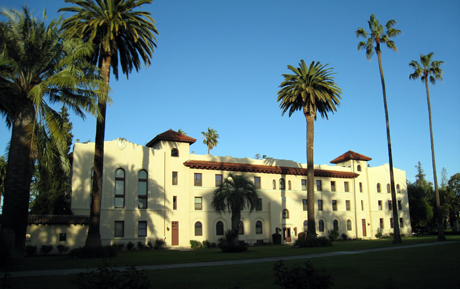Everything since last Tuesday’s election of Cardinal Jorge Bergoglio as Pope Francis has reignited my Jesuit instincts. Pope Francis is from the Jesuit order, and this is the first time a Jesuit has been selected by his peers to lead the 1.2 billion Catholics around the globe.
The Jesuit dots have connected in so many ways since last week that I felt compelled to write on Jesuit education today. My Jesuit education at Bellarmine College Preparatory between 1965-1969 was rich in values, character and relevance to the real world. Can we take the foundational beliefs of Jesuit education and transfer them to traditional public education, while still keeping the imperative separation of church and state?
I learned about the Jesuit order founded in 1539 by St. Ignatius of Loyola when I was a 14 year-old freshman at Bellarmine. The year was 1965. My family has an extended legacy with the Jesuits at Bellarmine, as my father graduated in 1933, my brothers in 1954 and 1957 and my son, Zack, in 2000.
My interest in education, teaching and public service started during my years at Bellarmine. The Jesuits taught me to be conscious of learning in all the day’s experiences, not just from books or in Latin class. They inculcated in me a yearning to reach out to others, to think critically, and to be a man for others, never for self-gratification. Becoming a reflective human being was a chief goal of our studies.
We had many male role models in black cassocks at Bellarmine, some in their 20s (scholastics studying for ordination into the priesthood), others seemingly ancient and many in between. The commonality amongst all was that they worked to create a more just and caring world filled with forgiveness and love.
The Ratio Studiorum (“Plan of Studies”) helped establish the Jesuit system of schools going back to 1599. Rev. Robert J. Spitzer S.J. writes that the ultimate goal of the Ratio Studiorium “was not merely to develop rhetorical, writing, and thinking skills, but to help students understand and articulate wisdom, knowledge, and habits benefiting their souls and the souls of others.” These tenets should be the bedrock of all traditional public school’s plan of study.
A school can be dedicated to these curricular goals whether public or Jesuit, and keep the critical constitutional separation of church and state. I tried to do so when I was a public elementary and middle school principal. It was my goal working with my faculty and staff to craft a learning climate in a traditional public school consistent with the state content standards and the principles in the Ratio Studiorum.
In 2014, Father Peter Pabst, S.J.—current president of the Nativity Middle Schools in the Sacred Heart Parish, east of Willow Glen—will be the president of a new Jesuit High School in the Cristo Rey Network. Our public high schools will be smart to look at the model, as it presents itself in East San Jose at the Five Wounds Portuguese National Parish. It could become a stand for quality secondary education.
The Cristo Rey High School will serve 14-18-year-old students living in poverty in East San Jose. Each student will be given a rich curriculum consistent with Jesuit tradition that emphasizes a corporate work-study program with real-world experiences.
We must not forget that the Rocketship model was born from a collaboration of the late Father Mateo Sheedy S.J., Santa Clara University (a Jesuit school), John Danner, Father Peter Pabst S.J. and the Sacred Heart Community. Mateo Sheedy Rockesthip was a charter school denied by San Jose Unified and approved on appeal by the Santa Clara County Board of Education in 2006.
The first Rocketship School, now a burgeoning network of schools opening up throughout the United States, was named after the Jesuit Rev. Mateo Sheedy, the late pastor of Sacred Heart Parish. Rocketship schools aspire to open regional clusters in all 50 states and grow to more than a million students. The Rocketship seeds were planted by the Jesuits to reach out to Latino youth who were growing up in poverty and who did not have the skills or coursework to get into Santa Clara University.
I am hopeful that Pope Francis, the wild card Jesuit, will use the teachings of St. Ignatius to begin to reform the Catholic Church by empowering women to help lead the church in an enlightened manner, as well as focus the Church’s work on elevating the poor and sick to the consciences of all and spark global leaders into action.
As a Jesuit-trained elected school board member, I will continue to work to create a just world of educational equity and excellence for each and every child.
Joseph Di Salvo is a member of the Santa Clara County Office of Education’s Board of Trustees. He is a San Jose native.





Rocketship schools seem to be a great model for public schools that give parents of failing public schools options to push their kids to college. However your article makes the point about the Jesuit influence with education and there is one flaw because if Fr Sheedy was the pastor of Sacred Heart in San Jose then he was surely NOT a Jesuit. Its still a great article but since your thesis hangs on Fr Sheedy’s influence and leadership you should at least fact check his background I believe you are incorrect.
Do you have a link to information on the Cristo Rey school? Is it an all boys school like Bellarmine and so many of the Jesuit schools? It would be a shame to leave out the young girls in the community.